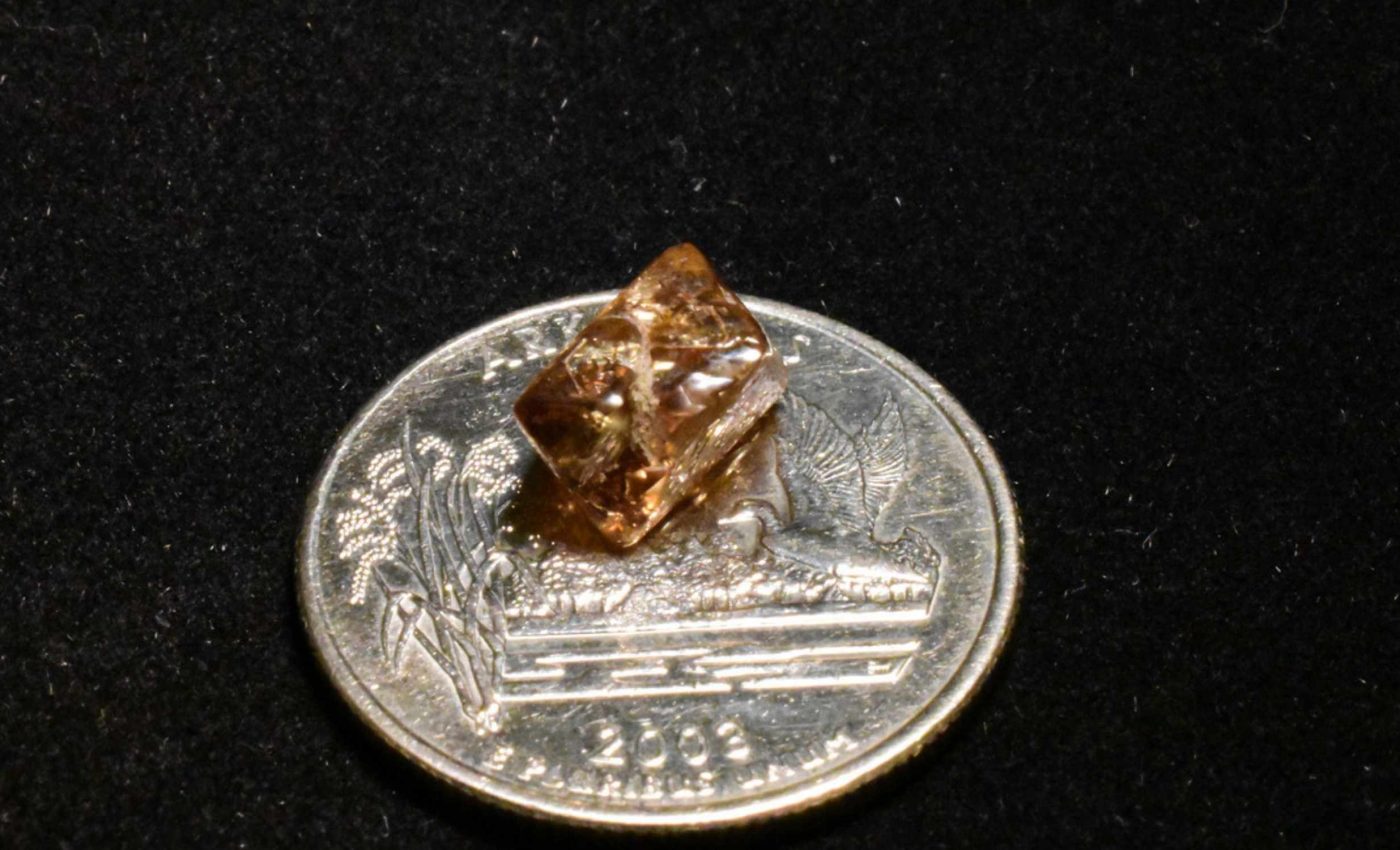
Tourist finds a diamond weighing almost 4 carats and names it 'Duke'
On April 21, 2025, David DeCook spotted a 3.81 carat brown diamond at Crater of Diamonds State Park in Murfreesboro, Arkansas.
The 911-acre park is the only site in North America where the public can search for natural diamonds and keep what they find. The stone weighs about 0.027 ounces and now has a name, The Duke Diamond.
Park staff later confirmed it was the largest diamond registered at the site so far this year. DeCook is from Stewartville, Minnesota, and he found the gem during a family visit.
Duke Diamond found in a park
According to park staff, April brought more than 12 inches of rain to the area, loosening soil across the diamond field.
The heavy rainfall washed away lighter sediment and exposed heavier minerals at the surface, making it easier for visitors to spot diamonds.
“Oh, you’re going to be mad once you see what I found!” said DeCook. The gem’s metallic copper luster and blocky, triangular shape made identification straightforward for park staff.
The Duke Diamond as the 217th registered diamond of 2025 and the largest since a 7.46 carat find in January 2024. The park notes white, brown, and yellow are the most common diamond colors in that order.
Arkansas diamond park is special
The park sits atop an ancient lamproite, an unusual volcanic rock that can carry diamonds. The vent brought mantle material up quickly, preserving crystals formed deep underground.
Geologists describe the site as a volcanic diatreme, a deep, pipe-like volcanic vent blasted open by gas.
The Prairie Creek diatreme at the park has unusually well preserved surface layers, which helps explain why diamonds still reach the ground surface.
Most diamonds at this site traveled fast enough to avoid turning into graphite. That rapid ascent locked in their crystal structure and let later weathering free some stones into the soil.
Heavy rain loosens soil and moves lighter particles away. That exposes denser pebbles and minerals, including diamond.
Park staff often see more surface finds after storms. The Duke Diamond appeared the day after nearly an inch of rain, which tracks with the pattern described.
Color and weight without the hype
Brown body color can reflect plastic deformation, stretching of a crystal lattice that tweaks how it absorbs light. Recent research on Arkansas diamonds documents deformation features and links them to color.
Gem weight is expressed in carat, a gemstone weight equal to 0.007 ounces. By that measure, 3.81 carats equals about 0.027 ounces.
Most visitors will not find a large stone, but small, well formed crystals do turn up. The park registers every confirmed diamond and gives finders a certificate.
Diamond park with a simple rule
Crater of Diamonds is North America’s only public diamond mine with a true finders keepers system. The search area is a 37.5 acre plowed field where you can keep what you find, as the official page explains.
Visitors can surface search or use simple tools that wash away mud and clay. Park staff provide free identification and registration at the Diamond Discovery Center.
Most people arrive for the thrill of possibility and the fun of hands-on geology. A good hat, water, and patience go a long way on a sunny Arkansas afternoon.
The largest diamond ever found in the United States came from this very field. The Uncle Sam diamond weighed 40.23 carats in rough and is now a 12.42 carat emerald cut gem in the Smithsonian catalog.
Another famous stone is the Strawn Wagner, found in 1990 by Shirley Strawn. Cut to 1.09 carats, it is graded D color and flawless and is on permanent display at the park.
These stories create a living archive of geology and chance. They show how Earth’s deep processes can surface in a single walk across a field.
Duke Diamond – mantle to surface
Diamonds in this region likely formed under high pressure in the mantle and rode up in eruptive pulses. Scientists study their inclusions and nitrogen patterns to infer the conditions miles below our feet.
Recent work links Arkansas diamonds to mantle rocks at cratonic margins. That idea helps explain why a relatively small craton, an ancient stable continental core, can still send diamond bearing magma toward the surface here.
Even so, weather and time remain the final steps in the journey. Erosion must do its quiet work before a visitor can do the last bit, stoop, and look closely.
—–
Like what you read? Subscribe to our newsletter for engaging articles, exclusive content, and the latest updates.
Check us out on EarthSnap, a free app brought to you by Eric Ralls and Earth.com.
—–













